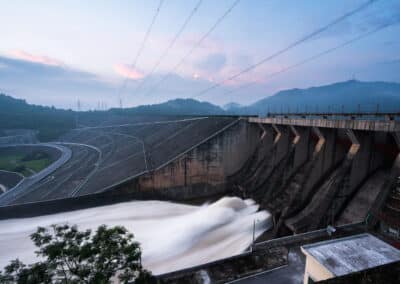Read Part 1 of the Cloud Computing Is the New Black series
Now that you’ve chosen your server (Amazon, Microsoft, Google or other) and determined the best model (public, private or hybrid) as discussed in Part 1 of the series, it’s time to execute. This is an appropriate time to introduce the project management discipline.
Migrating to the Cloud is, at its core, a project in itself. The most successful projects are guided by project management standards published and maintained by the Project Management Institute (PMI). The PMI publishes the Project Management Body of Knowledge (PMBOK) guide, the central and most lauded guide for the Project Management Framework. The Project Management Framework specifies the five stages of a project: 1) Initiating; 2) Planning; 3) Executing; 4) Monitoring and Controlling; and 5) Closing. Also specified are the project management areas of Knowledge, Integration, Scope, Schedule, Cost, Quality, Resource Management, Communications, Risks, Procurement and Stakeholder Management. Executing effective and efficient project management techniques can mean the difference between your Cloud migration project’s success and failure.
There are four primary categories of testing from the Software Development Life Cycle:
- Operational Requirements specify the operating environment the system must run in at launch and in the foreseeable future (Chung, Nixon, Yu & Mylopoulos, 1999).
- Performance Requirements are requirements that determine the level of system performance during various user scenarios, including under higher workloads.
- Security Requirements determine criteria of how the system and the data it creates are protected from attackers (Martinez, Jenkins, Quesada-Lopez, 2019).
- Cultural and Political Requirements are factors that would make the product or service unacceptable to a particular culture, region, or other political reason.
You may think to yourself: “But I’m a small business, can I really play in the arena?” Yes, it can be done. Here is how. First, deploy infrastructure as code. Then, hire multi-talented coding and development operations staff. Staffing may be an obstacle, but there is a world – literally a global resource – of affordable freelance personnel you can access remotely on an as needed basis. Finally, educate your staff on Cloud basics so they can be your company’s voice on your infrastructure’s competitiveness across the cloud universe.
In order to ensure your Cloud infrastructure project is being developed, designed, deployed, and maintained according to best practices, executives should be familiar with advanced Cloud certifications, which are continually maintained and updated by the Cloud provider to keep pace with the rapid advancements in Cloud computing. Certifications are usually valid for two years from the date of the certificate, when they must be renewed by testing the certificate holder. Individuals holding these certifications are highly sought after and valued by organizations wishing to deploy and maintain Cloud resources.
Regardless of size and budget of a company, careful planning of a Cloud migration can save time, headaches and money in the long run. In the final part of my three-part blog series, I’ll discuss Cloud security.
David Bankston
Chief Technology Officer, True Elements





